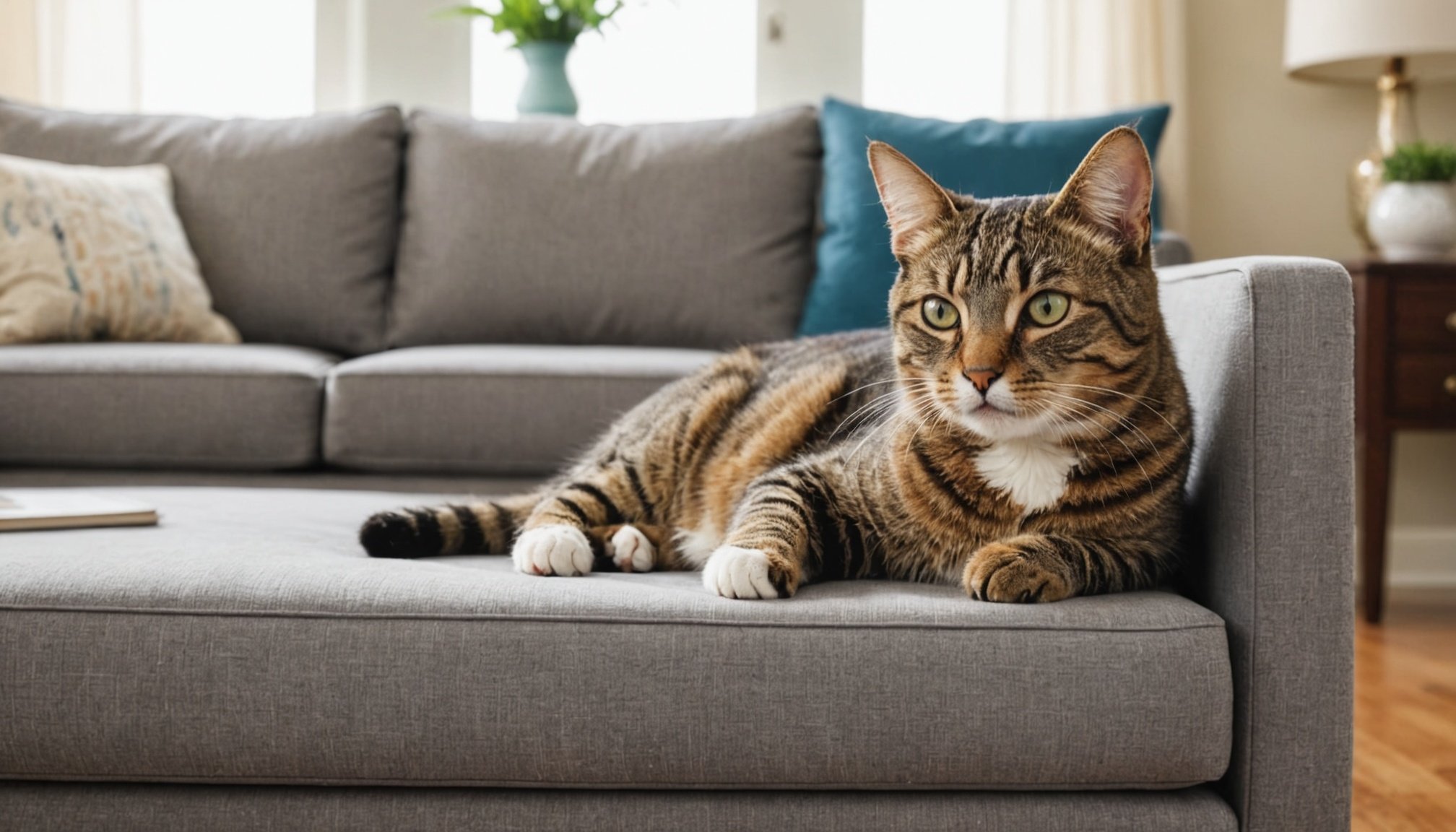Gentle Techniques to Deter Cats
Utilising gentle cat deterrent techniques can effectively prevent undesirable behaviours without stress. These techniques focus on understanding and adapting to your cat’s natural instincts. By creating a positive and nurturing environment, you encourage behavioural changes organically. Cats, known for their independence, often react negatively to punitive measures. Instead, non-punitive cat training builds trust and better aligns with their instincts.
Overview of Gentle Deterrent Techniques
Gentle deterrent techniques include creating noise-free zones and strategically placing items like lemon peels or aluminium foil where cats are not welcome. These harmless methods help communicate boundaries without distressing the cat. It’s essential to be consistent, ensuring your message is clear.
This might interest you : How can I engage my cat in interactive play to enhance their physical activity?
Why Non-Punitive Methods are Effective
Non-punitive methods foster a positive bond between cat and owner. By focusing on their needs, such as play, exploration, and comfort, these approaches encourage willingness to adapt. This contrasts with punishment, which might lead to fear or anxiety.
Building a Cat-Friendly Environment
Creating a cat-friendly environment involves integrating stimulating features into your home, such as climbing zones and interactive toys. Providing areas for scratching and exploring satisfies natural urges, reducing the temptation to disrupt other parts of the house. Gently guiding your cat towards these areas helps improve their habits effectively.
Also to discover : Travel savvy: must-know advice for persian cat owners with brachycephalic felines
Positive Reinforcement Strategies
Employing positive reinforcement for cats can significantly enhance the training experience by recognising and nurturing desirable behaviours. This reward-based training approach leverages a cat’s natural tendencies, fostering a cooperative dynamic rather than one of resistance.
Identifying Desirable Behaviors
To effectively reinforce positive behaviours, it’s crucial to first identify and understand your cat’s natural inclinations. Cats often exhibit innate tendencies such as climbing and scratching, which can be directed toward more desirable activities. Encourage these alternative behaviours by strategically using treats and praise. Providing rewards immediately after the desired behaviour ensures clarity in communication.
Creating a Reward System
Implementing a structured reward system is essential for consistent training. This involves determining specific behaviours to reward and timing the distribution of treats appropriately. For maximum effectiveness, adjust the reward system based on observable behaviour changes. For example, increase the reward value for more challenging tasks to maintain motivation.
Success Stories and Testimonials
Many cat owners have shared triumphant stories of transitioning behaviours through positive reinforcement. By sharing experiences, owners learn from effective strategies that have worked in real-life scenarios. Expert opinions support this method, highlighting its alignment with a cat’s instinctual needs and its impact on fostering a harmonious household environment.
Alternative Furniture Arrangements
Creating cat-friendly furniture arrangements in your home can play a significant role in deterring unwanted behaviours like scratching. The strategic placement of furniture not only curbs undesirable actions but also enriches a cat’s environment.
Importance of Strategic Furniture Placement
Positioning your furniture carefully can directly influence the behaviour of your feline companion. Cats are naturally curious, and their tendency to explore can lead them to scratch or climb on furniture. By placing furniture strategically, you can guide their interests towards more appropriate areas.
Incorporating Cat Trees and Scratching Posts
Adding cat trees and scratching posts to your home provides essential outlets for your cat’s climbing and scratching needs. These dedicated zones fulfil their natural instincts, drawing attention away from your cherished sofa or table. By integrating these features into your interior design, you create an engaging environment for your cat while preserving your furniture.
Creating Designated Cat Zones in Your Home
Designated cat zones, complete with a variety of activities and resting spots, ensure that your feline feels at home. This approach encourages them to confine their activities within these spaces. A comfortable environment tailored to a cat’s preferences enhances their sense of security, reducing the likelihood of disruptive behaviour elsewhere in the house.
Recommended Products for Deterrence
Selecting the right cat deterrent products is crucial for a safe and harmonious home environment. Utilizing safe cat training tools can significantly aid in steering your feline friend away from unwanted areas without causing harm.
Overview of Effective Products
When introducing deterrents, opt for non-toxic sprays and tapes. These options create an unappealing surface for cats, discouraging specific behaviours like scratching. Consider innovative tools like motion-activated devices that emit sounds when a cat approaches restricted areas. These products deliver gentle, immediate feedback to dissuade cats. The market offers a plethora of choices, so prioritise safe, non-toxic options that align with your cat’s sensitivities.
How to Use Deterrent Products Effectively
Maximise product efficacy by combining them with established behavioural strategies. Consider positioning deterrents in conjunction with positive encouragement techniques. Choose products that allow for easy application and removal to ensure they remain user-friendly. User feedback often highlights the importance of integrating deterrents with clear communication strategies, reinforcing desired behaviours.
Shopping Considerations
When exploring cat deterrent products, compare features such as ease of use and safety. Consider your cat’s unique preferences, as different products may yield varied results. Customer reviews offer valuable insights, helping identify products that are both effective and compatible with your pet’s habits.
Expert Advice and Resources
Navigating feline behaviour can sometimes require professional guidance. Consulting cat behavior experts offers valuable insights that can transform your approach to training and care. Veterinarians specialise in understanding the nuances of feline psychology, providing tailored advice on managing specific behavioural challenges effectively.
Engaging with comprehensive resources for cat owners is a crucial part of ongoing education. Books, online courses, and instructional videos abound, each offering distinctive approaches and training techniques. These resources assuage frustration by demystifying complex behaviours, equipping you with strategies to apply at home.
Building connections with local cat communities and forums is another invaluable resource. Sharing experiences and solutions in these communities enhances your understanding, while also receiving support and validation from others who have encountered similar challenges. These forums often host experts who provide free advice, making them a cost-effective tool for learning.
By intertwining professional advice, extensive resources, and community interaction, cat owners can confidently navigate challenges and encourage healthy behaviours. This multifaceted approach not only caters to your cat’s well-being but also fosters a harmonious living environment, reinforcing the bond between pet and owner.






